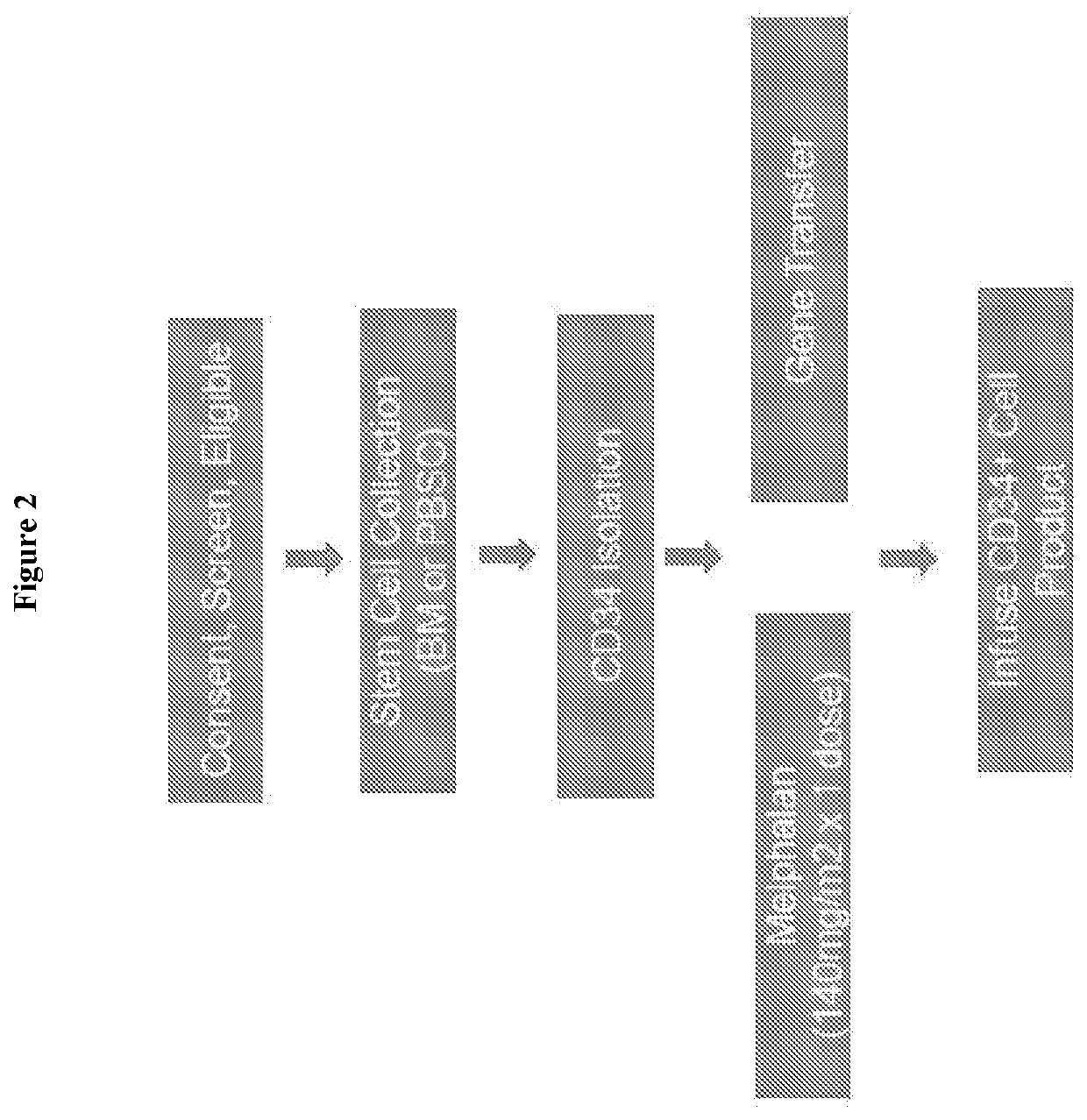Reduced intensity conditioning with melphalan
a technology of melphalan and intensity conditioning, applied in the direction of drug compositions, peptide/protein ingredients, extracellular fluid disorder, etc., can solve the problems of reducing the immune cell count of recipients, affecting so as to reduce the intensity of conditioning and improve the effect of immune function
- Summary
- Abstract
- Description
- Claims
- Application Information
AI Technical Summary
Benefits of technology
Problems solved by technology
Method used
Image
Examples
example 1
Reduced Intensity Conditioning Followed by Hematopoietic Cell Transplantation for Treating Sickle Cell Anemia
[0074]A clinical trial study was designed and carried out to determine whether transfer of a fetal hemoglobin gene (γ-globin) using a lentivirus vector (gene transfer) into human blood making cells is safe and feasible in patients with sickle cell disease. For example, the safety of bone marrow collection, gene transfer and chemotherapy conditioning in subjects with SCD is to be evaluated and the feasibility of obtaining sufficient autologous gene modified stem cells that can engraft the subject with SCD is to be evaluated.
Inclusion Criteria:
[0075]between 3 and 35 years of age;[0076]have sickle cell disease (HbSS / HbS-β0 / HbS-β+);[0077]have severe sickle cell disease (defined as having three (3) or more vaso-occlusive crises requiring intravenous pain medication, two (2) or more acute chest syndrome events in the past two (2) years, or one (1) acute chest syndrome events requir...
PUM
| Property | Measurement | Unit |
|---|---|---|
| Fraction | aaaaa | aaaaa |
| Time | aaaaa | aaaaa |
| Time | aaaaa | aaaaa |
Abstract
Description
Claims
Application Information
 Login to View More
Login to View More - R&D
- Intellectual Property
- Life Sciences
- Materials
- Tech Scout
- Unparalleled Data Quality
- Higher Quality Content
- 60% Fewer Hallucinations
Browse by: Latest US Patents, China's latest patents, Technical Efficacy Thesaurus, Application Domain, Technology Topic, Popular Technical Reports.
© 2025 PatSnap. All rights reserved.Legal|Privacy policy|Modern Slavery Act Transparency Statement|Sitemap|About US| Contact US: help@patsnap.com



